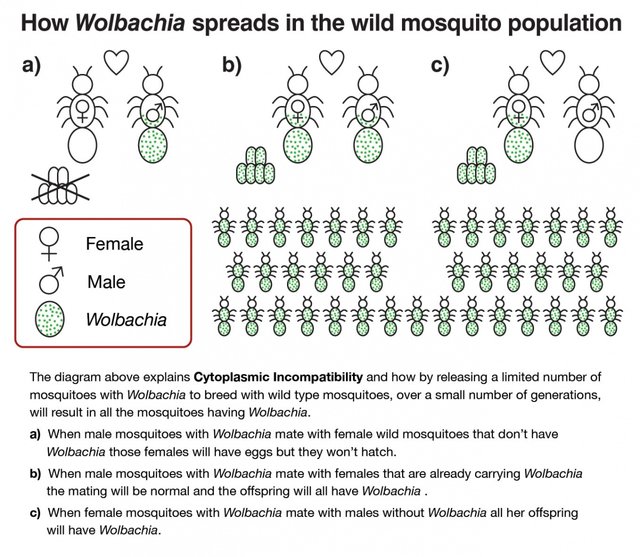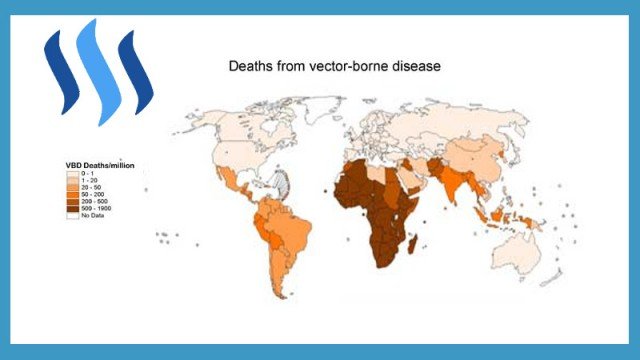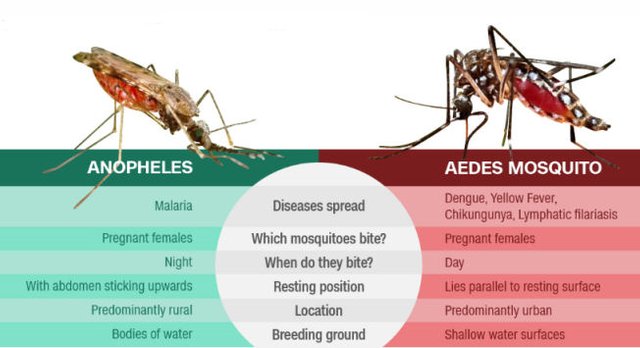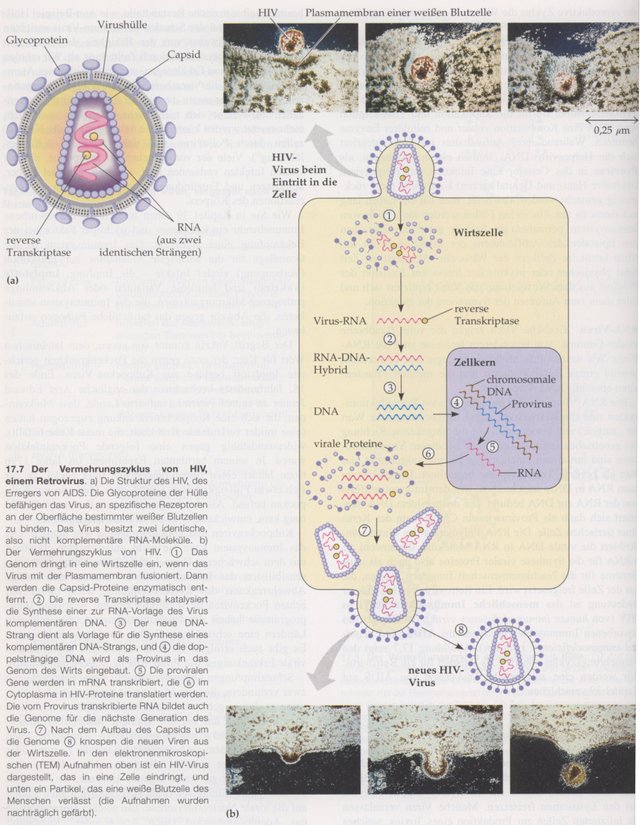How Malaria And Dengue Are Being Eradicated: Vector-borne Disease Control
As my last few posts have been about the environment have been pretty well received, I thought I would take the time to put together something a little more "science-y". I present a modified version of a research project I did on Vector Borne Disease Control centered around Wolbachia use in countering Dengue and Malaria. The entire paper is several pages long so I've taken the liberty of cutting it into some more digestible part. Remember to check out my site and drop a follow if you like!
"Vector-Borne diseases" are defined as infectious diseases in organisms that are spread through the passing of harmful pathogens and parasites of one living creature to another. The organism that initially carries the disease is referred to as a "vector" and this is where the virus begins or is born. Vector-borne disease control programs are a way of managing these vectors so that the spread of viruses isn't as wide. Some of the most problematic vectors we face in the world are pest insects such as mosquitos which pass on fatal diseases like Malaria, which caused estimated death toll of 627,000 in 2012 and Dengue, which is the fastest growing vector-borne disease in the world with a 30-fold increase in the last 50 years.
Many vector-borne diseases spreads are due to RNA viruses, or retroviruses. Retroviruses are viruses which do not have DNA as the genetic material but instead use RNA. Retroviruses can have single stranded nucleic acids and these viruses have a much higher mutation rate as more mutations occur in RNA then DNA. This is because RNA polymerases do not function to proofread the genetic material like in DNA, therefore more mistakes and mutations arise. Some of the more concerning retroviruses are Dengue Virus, West Nile, and HIV which impair millions of people all over the world every day.
Retroviruses are transmitted by means of the lytic cycle which is one of the two cycles of viral reproduction, the other being the lysogenic cycle. An enzyme called lysine is used to break down the bacterial cell wall in the process of lysis. This is how the lytic cycle gets its name and the lytic cycle starts with the virus injecting its own nucleic acid into the recipients' cells either by latching on to a receptor on the surface of one of the victim's cells or through means of physical force. When it meets with the host's cells it must enter through the plasmid membrane and cell wall if present. A circle forms in the center of the cell and once the virus is in the host's cells with the viral acids, the host mistakenly then copies the viral acids instead of its own nucleic acids. Inside the cell the viral DNA organizes themselves as viruses. When the cell can no longer hold the increasing number of bacteria, the membrane splits through lysis and the viruses are now able to freely infect other cells.
Accounting for 17% of the estimated global burden of infectious diseases, Vector-borne diseases if properly controlled and managed can drastically decrease the overall concern for infectious diseases world over. In these vector-borne control programs, Wolbachia has been observed to render mosquitos resistant to pathogen infections, therefore, making them unable to pass on vector-borne diseases to humans. However, it has also been noted that these mosquitos with Wolbachia are also more likely to contract West Nile and pass it on to humans. Not only that mosquitos have been known to pass their viruses on to any organism they come in contact with therefore domestic and farm animals are also seen as possible victims to these diseases. Because of both the pros and cons, we must be cautious when using Wolbachia to combat viruses such as Malaria and Dengue as it can also create a bigger threat for West Nile.

Great diagram I found! Image Credit
Wolbachia is a genus of bacteria which is known to infect arthropod species, including a large proportion of insects such as mosquitos. Although it is one of the most common parasitic bacteria its complex functions show that it takes advantage of a system that seems much more symbiotic, or mutualistic to the host rather than parasitic. It has even been observed that some host species cannot reproduce or survive without this helpful bacteria, and one study has concluded that an estimated 25-75 percent of all insects carry this bacteria. In the decade short of a century since the Wolbachia bacteria was first identified in the common house mosquito, scientists have been noting that this bacteria aids insects such as mosquitoes develop a resistance to diseases such as Dengue and Malaria as well as other Vector-borne diseases. Due to the cytoplasmic incompatibility of the complex Wolbachia bacteria, females infected with Wolbachia cannot reproduce with Non-Infected mates, therefore the infected mosquitos who are unable to carry diseases such as Dengue due the bacteria are the ones who will survive and reproduce.
TLDR; Vector-borne diseases bad, Vector-borne disease controls good, if properly monitored and controlled.
Stay tuned and remember to comment, vote and  for more research content!
for more research content!

@science @research @nature @life @steemit @steem @technology



Very interesting and well written article!
However I think you could have explained why in your images one can see the DNA of RNA viruses integrated into the DNA of the host cells. The reader may be surprised, because before you had correctly written that the genome of the retroviruses contains RNA instead of DNA. So where does their DNA suddenly come from? They use a special enzyme called reverse transcriptase which can synthesize DNA using the RNA genome as matrix. That explains where the virus DNA stems from ...
Later, when the enzymes of the host cell transcribe the integrated virus DNA, new virus RNA is synthesized.
I just "stole" the following image showing how an HI virus is doing his 'job' from my good old "Campbell: Biologie" book (German edition):

Thank you!! In all honesty, I didn't notice the diagram had DNA instead of RNA!! In the rush when I was looking around, I saw it was the same model but didn't make that connection I guess. Appreciate you taking the time to point this out and provide an explanation! Got to learn a little something myself, and just goes to show that I should take a bit more proofreading my stuff. :)
A nice piece on using bacteria to control the spread of life threatening diseases. Wolbaccia are an interesting organism. Very nice job.
As a bonus, and in addition to resteeming for exposure, we are awarding you a small 10 Steem Power deposit as a thank you for creating quality STEM related postings on Steemit. We hope you will continue to educate us all!
Woah thanks! Appreciate it! I hope I can continue to learn from and educate everyone as well :)
Great piece of information here, many people will benefit from this research hopefully.
Thank you very much for this interesting article. Could you please provide a link to the whole original paper?
There actually is not real link to the original paper, this is some of my personal work so this is just an excerpt from the full document. I could post the document online, but it's not available anywhere right now.
If you decide to put it online, please let us know. :-)